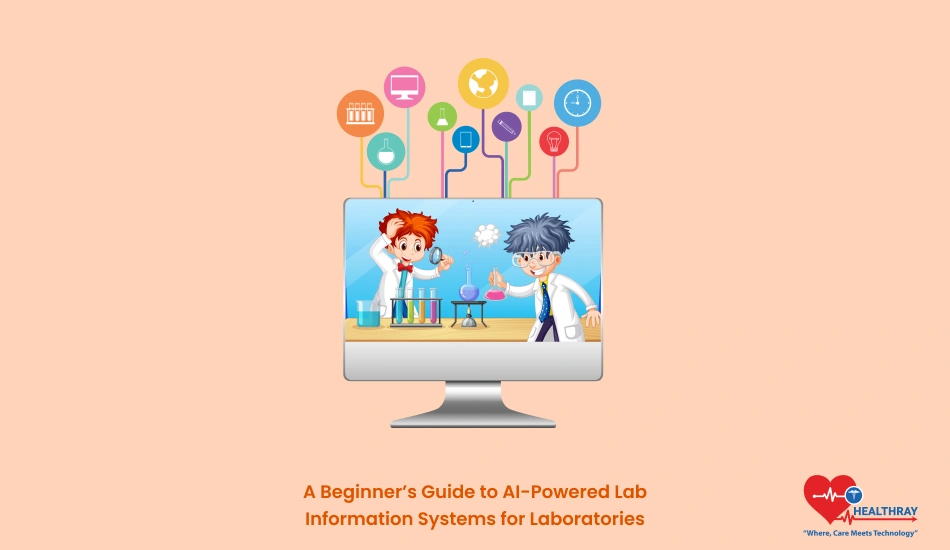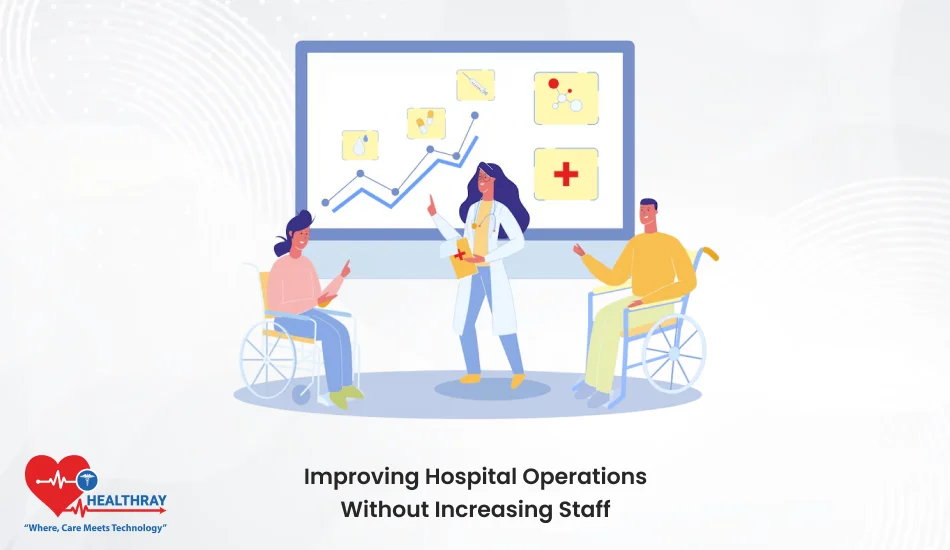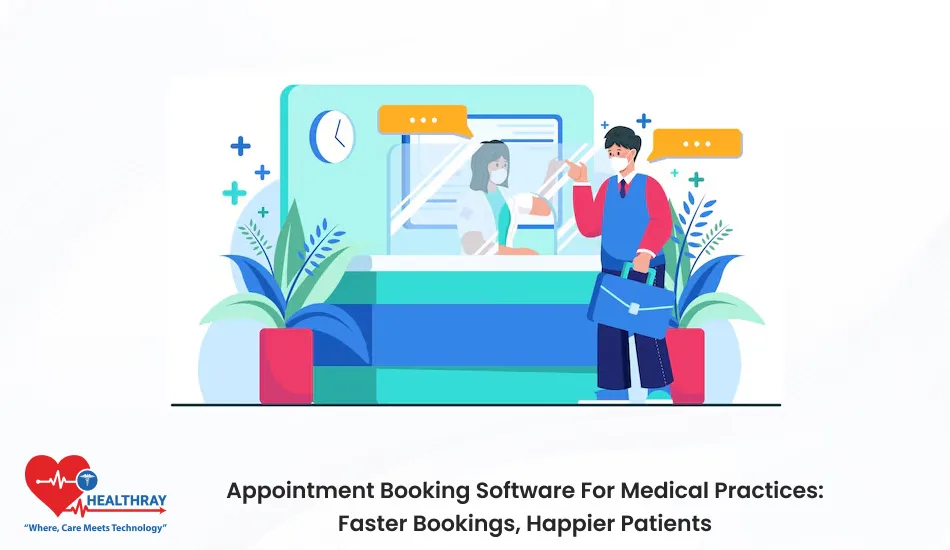Artificial Intelligence (AI) is transforming industries, and laboratories are no exception. In the fast-paced world of diagnostics, research, and testing, Laboratory Information Systems (LIS) are essential for managing data, automating processes, and ensuring quality. But what happens when AI steps in?
AI-powered Laboratory Information Management System takes traditional systems a step further by offering predictive analytics, enhanced data organization, and smarter workflows. Lab managers, healthcare professionals, and IT specialists are increasingly exploring these systems to improve efficiency, accuracy, and decision-making.
This guide will break down the essentials of AI-powered LIS. We’ll discuss its benefits, challenges, implementation steps, and future trends. You’ll also find practical examples of labs already reaping the rewards. Whether you’re considering upgrading your current LIS or just curious about what AI can bring to the table, this guide is here to help.
Benefits of Integrating AI into Laboratory Information Systems
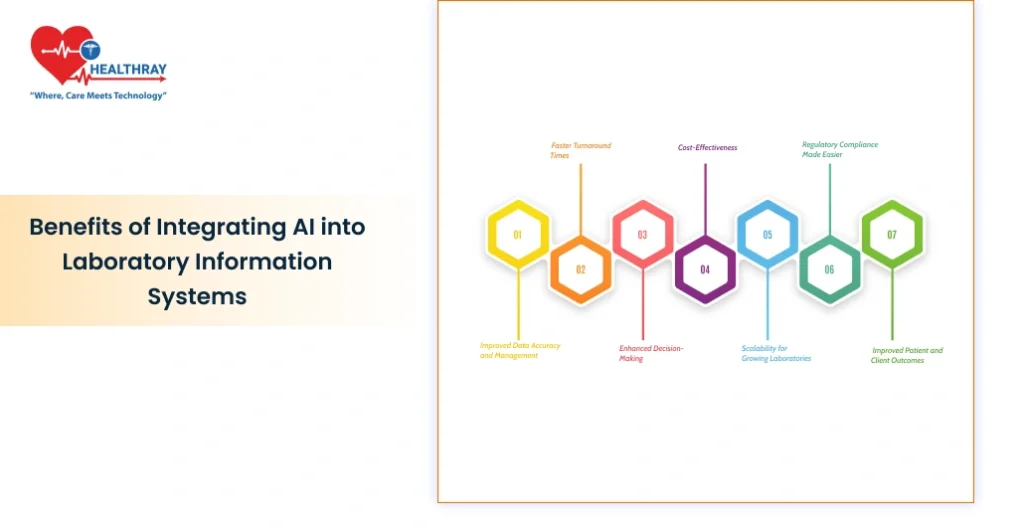
AI-powered Laboratory Information Systems bring a host of benefits that make lab operations more efficient, accurate, and scalable. Here’s a closer look at why integrating AI into LIS is becoming a game-changer for laboratories:
Improved Data Accuracy and Management
AI ensures that data entry errors are minimized by automating routine tasks like sample tracking and result recording. With machine learning algorithms, it can detect anomalies in data patterns, alerting users to potential issues before they escalate.
Faster Turnaround Times
AI-driven systems streamline workflows by prioritizing urgent tasks, automating repetitive processes, and even suggesting optimal scheduling. This can significantly reduce the time needed to process and report results, which is critical in high-pressure environments like clinical labs.
Enhanced Decision-Making
AI tools analyze vast datasets to provide actionable insights. Whether it’s predicting equipment failure or highlighting trends in test results, these insights support lab managers and healthcare professionals in making informed decisions quickly.
Cost-Effectiveness
While the initial investment in an AI-powered Laboratory system may be high, the long-term savings are substantial. Automation reduces the need for manual labor, minimizes errors that could lead to costly rework, and optimizes resource utilization.
Scalability for Growing Laboratories
AI-powered LIS can adapt to growing data volumes without compromising performance. Whether you’re adding new tests, equipment, or branches, these systems ensure seamless scalability.
Regulatory Compliance Made Easier
Laboratories must adhere to stringent regulations. AI can simplify compliance by tracking and documenting every step of the process. It also helps in generating audit-ready reports, reducing the risk of non-compliance penalties.
Improved Patient and Client Outcomes
In healthcare settings, faster and more accurate lab results directly impact patient care. For research and industrial labs, AI enhances data precision, leading to more reliable findings and improved client satisfaction.
Challenges and Considerations of AI-Powered Laboratory Information Systems
While the benefits of AI-powered Laboratory Information Systems are impressive, they come with their own set of challenges. Understanding these hurdles is crucial for lab managers, healthcare professionals, and IT specialists considering implementation.
High Initial Costs
The cost of acquiring, customizing, and implementing an AI-powered LIS can be significant. Small or budget-conscious laboratories may find these upfront expenses daunting, even if the long-term savings are promising.
Integration with Existing Systems
Labs often rely on legacy systems that may not be compatible with newer, AI-driven solutions. Ensuring a seamless integration requires careful planning and sometimes extensive IT support.
Data Privacy and Security Concerns
Handling sensitive patient or research data demands robust security measures. AI systems, while efficient, can become targets for cyberattacks. Ensuring compliance with data protection regulations adds another layer of complexity.
Staff Training and Adaptation
Introducing an AI-powered system requires comprehensive training for lab personnel. Resistance to change or lack of familiarity with new technologies can delay adoption and affect productivity in the short term.
Dependence on Quality Data
AI systems are only as good as the data they process. Poor data quality, incomplete records, or inconsistencies can lead to inaccurate predictions or errors, undermining trust in the system.
Ongoing Maintenance and Updates
AI systems require regular updates to stay effective and secure. This includes software patches, hardware upgrades, and periodic system audits, which may increase operational costs.
Ethical and Transparency Issues
AI’s decision-making processes can sometimes be a “black box,” making it difficult for users to understand how certain conclusions are reached. This lack of transparency can raise ethical concerns, especially in clinical labs.
Regulatory Compliance Complexities
AI in laboratories must align with regulatory standards, which may vary by region or industry. Keeping up with these standards requires constant monitoring and system adjustments.
Steps to Implement AI-Powered Laboratory Information Systems

Implementing an AI-powered Laboratory Information System requires a structured approach to ensure seamless integration and long-term success. Below are the essential steps for laboratories considering this transition:
Assess Current Needs and Goals
Start by evaluating your laboratory’s requirements. Identify specific areas where AI can bring value, such as data management, workflow automation, or predictive analytics. Define clear objectives to measure the success of implementation.
Engage Stakeholders Early
Include key stakeholders such as lab managers, IT specialists, and healthcare professionals in the planning process. Their input ensures that the system meets the practical needs of daily operations and has broad support.
Choose the Right Vendor
Research and select a reliable LIS provider with expertise in AI-driven solutions. Look for vendors who offer customizable options, robust support, and a proven track record in your industry.
Evaluate Compatibility with Existing Systems
Review the compatibility of the AI-powered LIS with your current infrastructure. This includes hardware, software, and data formats. Plan for any necessary upgrades or adjustments to avoid integration issues.
Develop a Detailed Implementation Plan
Create a roadmap detailing each phase of the rollout. Include timelines, budgets, and milestones. A phased implementation—starting with non-critical tasks—can minimize disruptions and help staff adapt gradually.
Prepare and Train Staff
Comprehensive training is crucial for successful adoption. Conduct workshops, hands-on sessions, and provide ongoing support to ensure all personnel understand the system and feel confident using it.
Migrate and Validate Data
Carefully migrate data from existing systems to the new LIS. Validate the data to ensure accuracy and completeness. This step minimizes the risk of errors post-implementation.
Test the System
Run extensive tests before going live. Simulate real-world scenarios to identify potential issues and make necessary adjustments. Testing ensures the system is reliable and ready for operational use.
Monitor and Optimize Post-Implementation
After the system is live, monitor its performance and gather feedback from users. Use this feedback to optimize workflows, address challenges, and ensure the system continues to meet your lab’s needs.
Plan for Ongoing Maintenance
Schedule regular updates, audits, and support checks to keep the system secure and effective. This step ensures your AI-powered LIS evolves alongside your laboratory’s needs and industry standards.
Case Studies of Successful AI Integration in Laboratory Information Systems
Real-world examples provide valuable insights into how AI-powered Laboratory Information Systems are transforming laboratories. Here are some noteworthy case studies that highlight the practical benefits and challenges of AI integration.
Clinical Diagnostics Laboratory: Streamlining Sample Processing
A busy clinical diagnostics lab faced challenges with sample tracking and result turnaround times. After implementing an AI-powered LIS, the lab achieved:
- Enhanced Efficiency: Automated tracking of over 1,000 daily samples reduced errors and processing delays.
- Improved Turnaround Times: AI prioritized urgent cases, reducing critical result delivery from 12 hours to 4 hours.
- Data-Driven Insights: Predictive analytics identified recurring equipment downtime, enabling preemptive maintenance scheduling.
Pharmaceutical Research Facility: Managing Complex Data
A pharmaceutical lab specializing in drug development struggled with managing and analyzing large volumes of experimental data. By adopting an AI-driven LIS:
- Advanced Analytics: Machine learning algorithms detected patterns in experimental outcomes, accelerating drug discovery timelines by 20%.
- Scalability: The system handled increasing data volumes seamlessly as new projects were added.
- Regulatory Compliance: Automated documentation streamlined reporting for regulatory submissions.
Pathology Lab: Enhancing Diagnostic Accuracy
A pathology laboratory leveraged AI to assist with diagnostic imaging and reporting. Key outcomes included:
- AI-Assisted Imaging: Algorithms flagged abnormal cells with 95% accuracy, improving diagnostic precision.
- Faster Report Generation: Automated result entry and reporting saved pathologists an average of 2 hours per day.
- Improved Collaboration: Cloud-based AI tools enabled remote consultations and second opinions.
Industrial Testing Laboratory: Optimizing Workflow Automation
An industrial testing lab, focusing on materials analysis, implemented an AI-powered LIS to handle increasing client demands. Results showed:
- Workflow Optimization: AI algorithms reduced manual intervention in sample testing by 30%.
- Enhanced Client Reporting: Automated, visually rich reports improved client satisfaction and expedited delivery timelines.
- Reduced Costs: Optimized resource utilization lowered operational costs by 15%.
Academic Research Lab: Enhancing Collaboration
A multidisciplinary research lab adopted an AI-driven LIS to support collaborative projects across departments. Key achievements included:
- Centralized Data Access: Researchers accessed shared data seamlessly, improving project efficiency.
- Predictive Experimentation: AI suggested optimal experimental setups, reducing trial-and-error phases.
- Grant Compliance: The system tracked grant requirements and ensured reporting deadlines were met.
These examples demonstrate the versatility of AI-powered LIS across various types of laboratories. They highlight tangible benefits like improved accuracy, faster workflows, and better resource management.
Future Trends in AI and Laboratory Information Systems
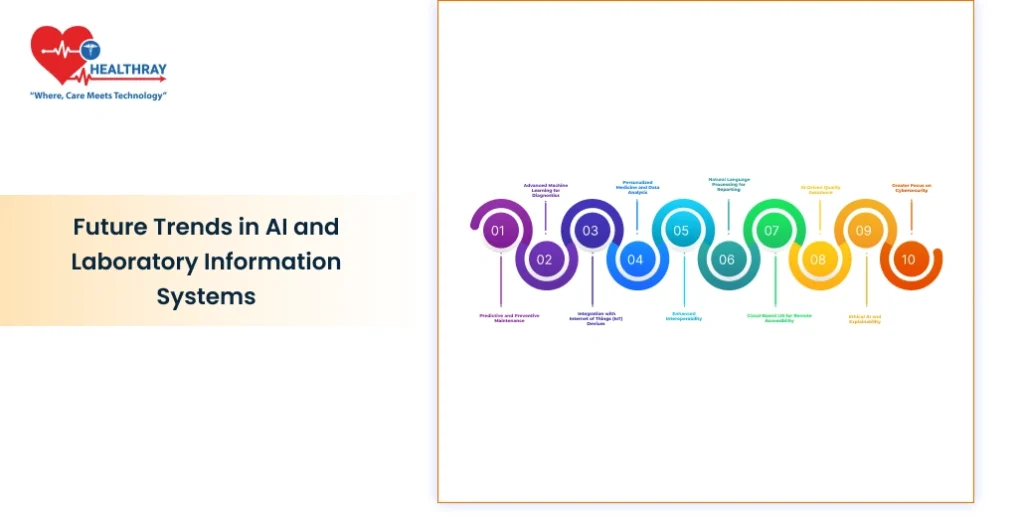
AI-powered Laboratory Information Systems are evolving rapidly, with innovations reshaping how laboratories operate. Here are some key trends to watch for in the coming years:
Predictive and Preventive Maintenance
AI will increasingly monitor laboratory equipment for signs of wear or failure. Predictive maintenance will minimize downtime by scheduling repairs before issues arise, saving time and resources.
Advanced Machine LeaBenefits of Integratingrning for Diagnostics
Machine learning algorithms will continue to improve diagnostic accuracy. They’ll analyze complex data sets, such as genomic sequences or imaging scans, to detect patterns that human analysts might miss.
Integration with Internet of Things (IoT) Devices
IoT-enabled lab equipment will integrate seamlessly with AI-powered LIS. This will allow real-time monitoring and data collection from connected devices, further enhancing automation and data accuracy.
Personalized Medicine and Data Analysis
In clinical labs, AI-driven systems will play a critical role in personalized medicine. By analyzing patient-specific data, these systems will guide tailored treatment plans, improving patient outcomes.
Enhanced Interoperability
AI will enable better integration between different software and hardware systems. This will allow laboratories to share data effortlessly across departments and institutions, fostering collaboration.
Natural Language Processing for Reporting
Natural Language Processing (NLP) tools will generate detailed, context-aware reports. This will streamline communication between laboratories, clinicians, and other stakeholders.
Cloud-Based LIS for Remote Accessibility
As cloud technologies become more secure and widespread, laboratories will adopt cloud-based LIS for remote access and collaboration. This trend will support multi-location labs and remote work scenarios.
AI-Driven Quality Assurance
Quality control processes will benefit from AI’s ability to analyze vast datasets for deviations and anomalies. This will ensure consistent adherence to standards and regulations.
Ethical AI and Explainability
As AI adoption grows, there will be an increased focus on making AI decisions more transparent and ethical. Systems will be designed to explain their reasoning, improving trust among users.
Greater Focus on Cybersecurity
With growing concerns around data breaches, laboratories will prioritize AI-enhanced cybersecurity measures. These systems will detect and mitigate threats in real time, safeguarding sensitive information.
The future of AI-powered LIS is bright, with innovations poised to transform laboratory operations. Staying ahead of these trends will help laboratories remain competitive and efficient.
Conclusion
AI-powered Laboratory Information Systems are no longer just a futuristic concept—they’re here, reshaping how laboratories function across industries. From improving data accuracy and streamlining workflows to enabling predictive analytics, these systems offer unparalleled advantages. However, implementing them requires careful planning, addressing challenges like integration, training, and cost.For lab managers, healthcare professionals, and IT specialists, embracing AI is a strategic move toward innovation and efficiency. By staying informed about emerging trends and real-world applications, you can unlock the potential of AI-powered Hospital Management Systems to enhance laboratory operations and deliver better outcomes.
